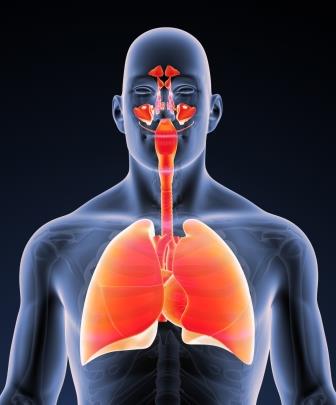In 2020, healthcare providers prescribed 201.9 million antibiotic prescriptions—equivalent to 613 antibiotic prescriptions per 1,000 persons.1 Studies have shown that between 25% and 50% of antibiotics prescribed in the outpatient setting are unnecessary—that is, prescribed for conditions for which antibiotics are not indicated.2,3 Inappropriate use of antibiotics leads to the spread of antibiotic resistance and places patients at unnecessary risk for adverse events. Studies have shown that patients who receive antibiotics for respiratory tract infections are at least twice as likely to harbor antibiotic-resistant organisms for the ensuing 12 months, compared with those not prescribed antibiotics.4 In addition, up to 25% of patients who use antibiotics (including community-dwelling adults and children) experience an adverse event, which range in severity from mild (eg, diarrhea and rash) to potentially life-threatening (eg, anaphylaxis, Clostridium difficile diarrhea).5,6
Trends in Antibiotic Prescribing
For more than two decades, the Centers for Disease Control and Prevention (CDC) has promoted a national educational campaign to encourage appropriate use of antibiotics, particularly for acute respiratory tract infections (ARTIs). These efforts led to a decrease in antibiotic use in the late 1990s and early 2000s.3-7
A retrospective analysis of outpatient antibiotic prescribing from 2000 to 2010 using data from the Medical Expenditure Panel Survey (MEPS) found that, while the annual rate of antibiotic prescriptions among children and adolescents declined during the study period, in adults the rate peaked in 2003 and then remained stable until 2010; in older adults, the annual rate of antibiotic prescriptions increased 30% from 2000 to 2010.2 The authors attribute the decline in rates among children to education initiatives and to the introduction of routine infant pneumococcal vaccinations in 2000, leading to a subsequent reduced incidence of invasive pneumococcal disease and otitis media. A 2019 analysis using MEPS data from 2010-2015 concluded that antibiotic prescribing for ARTIs, though declining, remains high. There were 64,081,892 ARTI antibiotic prescriptions written, with a decrease from 10.9 (2010) to 9.7 million (2015) during the study interval. Black patients were more likely to receive antibiotics than White patients, and antibiotic prescription was more likely if the patient-provider race was concordant.8
Initiatives promoting appropriate antibiotic use have focused on ARTIs, such as sinusitis, bronchitis, pharyngitis, and nonspecific upper respiratory tract infections, because patients often receive antibiotics for these infections even though they are overwhelmingly viral in origin and do not respond to antibiotic therapy. An analysis of data for patients aged 18 years or older from the National Ambulatory and National Hospital Ambulatory Medical Care Surveys (NAMCS/NHAMCS) for the years 2007-2009 found that antibiotics were most commonly prescribed for respiratory conditions (41% of antibiotics), skin/mucosal conditions (18%), and urinary tract infections (9%).2 A subsequent review of NAMCS/NHAMCS data (2011) found that approximately 44% of outpatient antibiotic prescriptions are written to treat patients with ARTIs, and up to half of these outpatient prescriptions are unnecessary because they are prescribed for viral infections and for diagnoses that are overused (eg, sinusitis diagnosis without meeting criteria).9 A study that analyzed NAMCS data (2000-2010) for children younger than 18 years found that an estimated 27.4% of ARTI cases were bacterial, but antibiotics were prescribed in 56.9% of cases.10
From 2011 to 2018, outpatient antibiotic prescriptions decreased overall.11 The COVID-19 pandemic had a significant impact on outpatient antibiotic prescribing: from 2019 to 2020 there was a 25% decrease in outpatient prescriptions, resulting in prescribing rates that were much lower, exceeding the 15% reduction in overall antibiotic prescribing needed to reach the 2020 national goal for Combating Antibiotic-Resistant Bacteria. This was likely due, in part, to decreases in outpatient visits and healthcare-seeking due to the pandemic, CDC notes. The agency will continue to analyze prescribing data to identify the ongoing impact of the pandemic on prescribing.
COVID-19
COVID-19, caused by SARS-CoV-2, causes acute respiratory disease in many patients, but because the infection is viral, there is no role for antibiotics in the absence of a clear indication for them, such as superimposed bacterial infection. Superimposed bacterial infection in COVID-19 is uncommon. A systematic review and meta-analysis of studies (published from 2019 to April 16, 2020) that evaluated patients hospitalized with confirmed COVID-19 and reported the prevalence of acute bacterial infection found rates of bacterial co-infection (at presentation) and secondary infection (after presentation) of 3.5% and 14.3%, respectively.12 This meta-analysis included 24 studies and 3,338 patients. Another review found similar rates, with bacterial co-infection reported in 3.5% of COVID-19 patients and bacterial secondary infections during hospitalization occurring in up to 15%.13 When superinfection is present, antibiotic therapy should be chosen based on treatment guidelines from scientific societies such as Infectious Diseases Society of America (IDSA) and American Thoracic Society (ATS).14
Clinical Guidelines for the Management of ARTIs
Clinical practice guidelines have been developed to help clinicians manage common ARTIs for which antibiotics are frequently overprescribed. The CDC has provided treatment recommendations for ARTIs based on current guidelines, and the following sections offer a summary of the recommendations.15
Adults
Common cold/nonspecific upper respiratory tract infection (URI). These illnesses are generally caused by viruses and are self-limited, typically lasting up to 10 days. Signs and symptoms include fever, cough, rhinorrhea, nasal congestion, sore throat, headache, and myalgias. Because antibiotics are ineffective against viruses and do not decrease the duration or severity of illness, these agents should not be prescribed. Treatments aimed at symptomatic relief offer limited benefit.16 Decongestants alone or combined with a first-generation antihistamine have been shown to provide a small benefit in short-term symptom relief of nasal symptoms and cough.16 Antihistamines as monotherapy do not provide a benefit. The CDC recommends that clinicians and patients weigh the benefits and harms of symptomatic therapy.15
Acute rhinosinusitis (RS). Between 90% and 98% of RS cases are viral. Symptoms of RS include nasal obstruction, purulent nasal discharge, facial pain, decreased sense of smell, and cough. Guidelines from IDSA say that acute RS is probably bacterial if any one of the following is present: (1) persistent symptoms or signs with no improvement (≥10 days); worsening symptoms (3-4 days), such as new-onset or worsening-fever, headache, or increase in nasal discharge after initial improvement; or severe symptoms and signs such as fever >102°F and purulent nasal discharge lasting for at least 3 to 4 consecutive days at the beginning of the illness.17 Patients who do not have one of these presentation patterns likely have viral RS, and antibiotic therapy is not recommended. Physical exam findings such as purulent discharge have low specificity and sensitivity for acute bacterial RS (ABRS). Although some clinicians might feel inclined to prescribe an antibiotic “just in case” the infection is bacterial, studies of antibiotic therapy versus placebo in adults with presumed ABRS have shown limited benefit of such therapy, yielding number-needed-to-treat values ranging from 13 to 15 (ie, 13-15 patients needed to be given an antibiotic for one additional patient to benefit).17,18 If a clinical diagnosis of ABRS is established based on the presence of one of these presentations, watchful waiting for up to 7 days is encouraged for uncomplicated cases (complications include orbital and intracranial infections) if reliable follow-up can be ensured.15 Those who do not improve after 1 week or worsen at any time should be prescribed antibiotics. First-line therapy options include amoxicillin or amoxicillin/clavulanate.17 Macrolides such as azithromycin are not recommended due to high levels of antibiotic resistance among Streptococcus pneumoniae, the most common cause of ABRS.
Acute uncomplicated bronchitis. Acute bronchitis is diagnosed clinically based on findings of acute cough, with or without sputum production, and signs of lower respiratory tract infection in the absence of chronic lung disease (eg, chronic obstructive pulmonary disease, asthma) or an identifiable cause, such as pneumonia. Colored sputum is not a useful indicator of bacterial infection. Approximately 95% of cases are caused by a viral infection, and thus antibiotics are not recommended, and management focuses on relief of symptoms. Symptomatic therapy options include cough suppressants, decongestants, and, if there is evidence of bronchospasm, inhaled bronchodilators.
Pharyngitis. Group A beta-hemolytic streptococcus (GAS) infection is the only common indication for antibiotic therapy in patients with sore throat. GAS account for no more than 10% of sore throat cases in adults, and GAS infection is diagnosed by a rapid antigen detection test (RADT). Adults who meet two or more Centor criteria (eg, fever, tonsillar exudates, tender cervical lymphadenopathy, absence of cough) should receive a RADT; routine throat cultures are not recommended in adults. Patients with negative RADT results should not receive an antibiotic. First-line therapy for those with positive RADT results is amoxicillin or penicillin V for 10 days. Azithromycin is not recommended due to high levels of antibiotic resistance among Streptococcus.
Children
Common cold. Viral URIs are often characterized by nasal discharge and congestion or cough. Usually, nasal discharge begins as clear and changes throughout the course of the illness. Antibiotics should not be prescribed for viral URIs. Management should focus on symptomatic relief, keeping in mind that there is no proven benefit from over-the-counter cough and cold medications in children under 6 years of age and that these substances are among the top 20 substances leading to death in children younger than 5 years.
Pharyngitis. Children with sore throat plus two or more of the following features should undergo a RADT test: absence of cough, presence of tonsillar exudates or swelling, history of fever, presence of swollen and tender anterior cervical lymph nodes, and age <15 years. Testing should generally not be performed in children under 3 years of age. Negative RADT results should be backed up by a throat culture; positive RADTs do not require a back-up culture. Amoxicillin and penicillin V remain first-line therapy.
Acute otitis media (AOM). Definitive diagnosis requires recent (<48 hours) onset of otalgia (holding, tugging, rubbing of the ear in a nonverbal child) or intense erythema of the tympanic membrane (TM) and either (1) moderate or severe bulging of the TM or new-onset otorrhea not due to otitis externa, or (2) mild bulging of the TM. Watchful waiting can be considered for mild cases with unilateral symptoms in children aged 6 to 23 months or unilateral or bilateral symptoms in children 2 years and older. Use of antibiotic therapy for AOM in children is supported by quality evidence, with randomized clinical trials showing differences in clinical improvement of 26% to 35% favoring initial antibiotic treatment as compared with placebo.19 Amoxicillin is first-line therapy for children who have not received amoxicillin within the past 30 days. Amoxicillin/clavulanate is recommended if amoxicillin has been taken within the past 30 days, if concurrent purulent conjunctivitis is present, or if the child has a history of recurrent AOM unresponsive to amoxicillin.
Acute sinusitis. A bacterial diagnosis can be established based on the presence of one of the following criteria: persistent symptoms with no improvement (nasal discharge or daytime cough >10 days), worsening symptoms (worsening or new-onset fever, daytime cough, or nasal discharge after initial improvement of a viral upper respiratory infection), or severe symptoms (fever >102°F, purulent nasal discharge for at least 3 consecutive days). If a bacterial infection is established, watchful waiting for up to 3 days can be offered for children with persistent symptoms, and antibiotic therapy should be prescribed for those with severe or worsening disease. Amoxicillin or amoxicillin/clavulanate is first-line therapy.
Bronchiolitis. This lower respiratory tract infection can be caused by many respiratory viruses, most commonly respiratory syncytial virus (RSV). Illness caused by RSV infection is characterized by rhinorrhea, cough, wheezing, tachypnea, and/or increased respiratory effort. Antibiotics should not be prescribed. A chest x-ray is not indicated unless signs and symptoms are severe, the child’s condition fails to improve with standard therapy, or a diagnosis of pneumonia is being considered.[/vc_column_text][/vc_column][/vc_row][vc_row el_class=”rex_container” bg_color_overlay=”no-color” bg_color_overlay_bottom=”no-color”][vc_column][vc_column_text]






